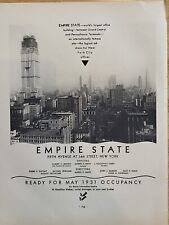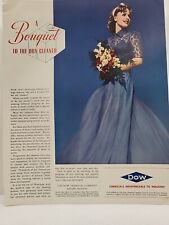"Fortune magazine" Charles J.V. Murphy Signed 3X5.5 Card For Sale

When you click on links to various merchants on this site and make a purchase, this can result in this site earning a commission. Affiliate programs and affiliations include, but are not limited to, the eBay Partner Network.
"Fortune magazine" Charles J.V. Murphy Signed 3X5.5 Card:
$209.99
Up for sale a RARE! "Fortune magazine" Charles J.V. Murphy Hand Signed 3X5.5 Card.
ES-2968C
Charles J.V. Murphy, 83, the former Washington bureau chief
for Fortune magazine and the author of best-selling books about the duke and
duchess of Windsor and Adm. Richard Byrd's expeditions to Antarctica, died of
lung cancer Dec. 29 at his home in Grafton, Vt. Mr. Murphy's career as a
journalist included coverage of World War II in Europe and the Pacific and
radio accounts from Antarctica on the progress of Byrd's expedition there in
the early 1930s. In May 1941, he was a passenger aboard the Egyptian steamer
Zamzam when it was sunk in the South Atlantic by a Nazi warship. He wrote a
dramatic account of the incident and the rescue of all 323 passengers for Life
magazine. In the late 1940s, he was commissioned by the duke of Windsor to write
the duke's autobiography, "A King's Story," which became a
best-selling account of the events leading up to the duke's abdication as King
Edward VIII in 1938 to marry "the woman I love," Wallis Warfield
Simpson. Later Mr. Murphy wrote the duchess' autobiography, "The
Heart Has Its Reasons." That book appeared in 1955 after Mr. Murphy had
been fired upon completing 75 percent of it, then rehired to finish the job. In
the late 1970s, he was coauthor with Joe Bryan of "The Windsor
Story," a book about the life together of the duke and duchess after the
abdication. Mr. Murphy spent most
of his career with Time, Life and Fortune magazines. He retired in 1966 after
having been chief of Fortune's Washington bureau for 14 years. He lived in
Washington until moving to Vermont in 1980. He was said to have had an
encyclopedic mind and a love for good whiskey and good conversation. For years,
Mr. Murphy and the late James Jesus Angleton, the fabled former
counterintelligence chief of the Central Intelligence Agency, shared a table at
the Army & Navy Club in Washington where they discussed matters such as the
British debacle at Gallipoli during World War I and Gen. Douglas MacArthur's
tactics during the early months of the Korean War. Mr.
Murphy was particularly well-connected with the defense and intelligence
communities. During the 1950s and 1960s, he was a colonel in the Air Force
Reserve and his duties included advising and writing speeches for NATO
officials. He also wrote children's
books, including "Little Toot," a popular 1940s book about a tugboat
in New York harbor, and "Hercules and Loop," a book about an
airplane. A native of Newton, Mass., Mr. Murphy attended Harvard University,
but he left after two years to take a job as a night rewrite man on the Boston
American. Later he worked for The Associated Press and United Press in New
York. He was fired by United Press in the late 1920s after rewriting a 27-word
dispatch on the fall of Nanking to the Kuomintang during the Chinese revolution
into a dramatic 1,500-word account that was distributed nationwide on the UP
wires. His editors said the facts did not support Mr. Murphy's version. In the
early 1930s, his work came to the attention of Byrd, who asked Mr. Murphy to
accompany him to Antarctica. That trip took two years. In addition to
broadcasting regular accounts of the expedition's progress, Mr. Murphy did the
writing for three books about it that appeared under Byrd's name, "Little
America," "Discovery" and "Alone." In 1935 Mr. Murphy joined Time Inc. He later
became a senior writer on the staff of Life. During World War II, he wrote a
three-part series on Winston Churchill that caught the eye of the duke of
Windsor. That led to the duke's invitation to Mr. Murphy to write his
autobiography. Late in the war, Mr. Murphy was sent to China to replace
Theodore H. White, who had fallen into disfavor with Henry R. Luce, the
editor-in-chief of Time, Life and Fortune. There he spent five months working
on a profile of Chiang Kai-shek, the nationalist Chinese leader, but the
article was never published.

Related Items:
1930 Empire State Building Fortune Magazine EARLIEST Print Advertising Tearsheet
$200.00
1939 Dow Chemicals Fortune Magazine Print Advertising Bouquet Bride Color
$25.00
"Fortune magazine" Charles J.V. Murphy Signed 3X5.5 Card
$209.99



